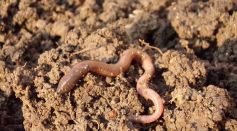Tags: Plastic pollution
Novel Catalyst Turns Plastic into Fuel and Wax

Plastics Are Now Leaching With More Than 100 Hazardous Chemicals
America Ranks Third in Highest Global Coastal Plastic Pollution

Air Pollution Causes People to Choose Food Delivery Services, Resulting in Plastic Pollution
Converting Plastic Fuel Back Into Fossil Form Is a New Method of Greenwashing

Tire Pollution May Be a Significant Plastic Pollutant in Oceans, Researchers Reveal

Unique Enzyme Combination Could Reduce Global Plastic Waste

Autopsies Show Microplastics Are in Internal Organs

1.3 Billion Tons of Plastic Will Be in the Land, Air, and Sea by 2040 If People Don't Change Ways
Poor Creature! Watch as Thai Vet Pulls Out a 12-Inch-long Piece of Plastic From a Turtle's Behind

Worms are Losing Weight: Food Security Risk
Newly Discovered Plastic Waste Looks Just Like Pebbles
Some of America’s Most Popular Restaurants Plan to Ban Plastics by 2020
What Trendy Balloon Releases Do to the Planet
Marine Plastic Pollution Harms Bacteria That Help Us Breathe
Zero-Waste Shops are Taking Over UK and Consumers are Making the Switch
Most Popular

How Strong Are Tornadoes? Understanding the EF Scale and the Extreme Power Tornadoes

Glaciers Are Melting Fast: Climate Change Impact Driving Sea-Level Rise Worldwide

How Telescopes Work: Optical vs Radio vs Space Telescope Science Explained

Can the World Run Out of Water? Water Scarcity Science and Climate Impact Explained





